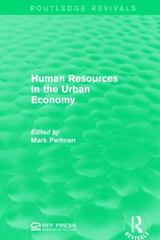Question
Questions : Q1 : The owner of a new restaurant in California had trouble getting customers to comply with the state's smoking ban. The fine
Questions :
Q1 :
The owner of a new restaurant in California had trouble getting customers to comply with the state's smoking ban. The fine for a first violation is $100. A second violation carries a fine of $200, and third and subsequent violations cost $500 each. After a third violation within one year, a representative of California's Occupational Safety and Health Administration is required to investigate complaints. Employers may be cited with fines up to $7,000 for violations classified as general or serious, and fines up to $70,000 for violations classified as willfully serious. Last year, in the first year in operation, the restaurant owner had four violations, plus a violation for a serious offense that may or may not have been willful.
A. What are the minimum and maximum amounts that the owner would have paid in fines?
B. How do these government actions protect consumers?
Q2 :
A vitamin company, Pro Health (PH), was preparing to launch a new product called ProBio. It had produced 20,000 units of ProBio at a cost of $5 per unit and had packaged the product in bottles with labels that prominently displayed the ProBio name. At the last minute, PH learned that an established drug company already sells a product named ProBio. FDA regulations prohibit drugs with identical names from being sold on the market, with the penalty for noncompliance being full product recall. Rather than face product recall, PH decided to comply with the regulation voluntarily. As a result, the product had to be renamed and rebranded, the label had to be redesigned, and a new advertising campaign had to be formulated and launched. What were the likely outcomes of this decision? What might have happened if the company had not voluntarily changed its product?
Q3 :
Joe's Burrito Cart sits on a busy street corner. Customers line up to get Joe's hot burritos. In order to comply with regulations, Joe must keep his cart and utensils clean; advertise ingredients on a visible sign; supply napkins, paper plates, plastic utensils, and containers for customers; have a covering over the cart to protect food and food preparation areas; and keep his hands covered with plastic gloves. What are the effects of these regulations, both monetary and non-monetary?
Q4 :
Under the Americans with Disabilities Act's Standards for Accessible Design, all ATMs must be equipped with Braille keypads to allow access to customers with visual impairment. In order to comply with this regulation, a community development bank with five branch offices needed to change the ATMs at each of its facilities. Each machine cost $15,000, for a total of $75,000 in compliance costs. Why should the bank be required to face these extra costs?
Step by Step Solution
There are 3 Steps involved in it
Step: 1

Get Instant Access to Expert-Tailored Solutions
See step-by-step solutions with expert insights and AI powered tools for academic success
Step: 2

Step: 3

Ace Your Homework with AI
Get the answers you need in no time with our AI-driven, step-by-step assistance
Get Started


